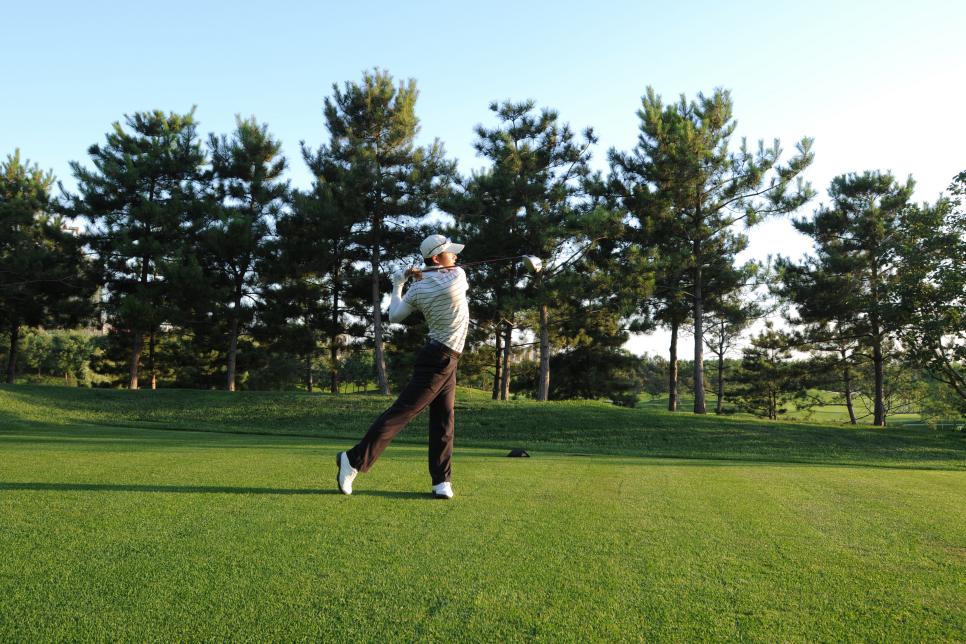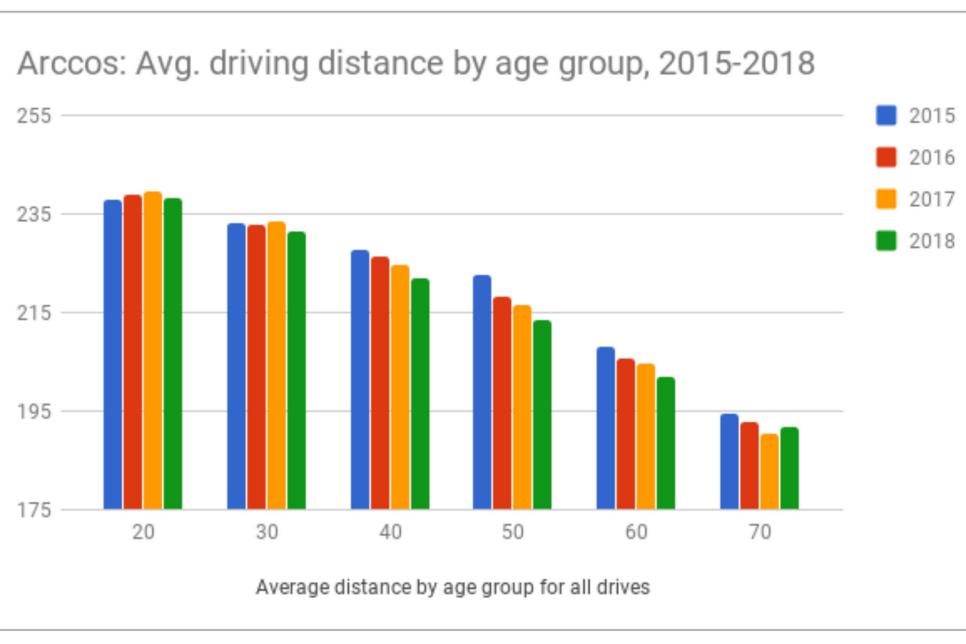Equipment
Are average golfers gaining distance? New study says not by a long shot

PhotoTalk
Memo to the ruling bodies: A lot of us are actually hitting it shorter.
While the golf world contemplates the “unusual and concerning” findings of the 2017 Distance Report from the USGA and R&A about driving distances on golf’s professional tours, a new study from Arccos, the GPS round-tracking golf-statistics app, says the rest of golf just might be going backwards when it comes to driving distance.
According to the study of Arccos users’ driving habits since 2015, driving distance across all age groups and all handicaps is at best flat and in many cases declining. In short, and perhaps not surprisingly, the data suggests that the only distance problem for the more than 99 percent of golfers who are not getting paid to play is a lack of it.
Arccos recently examined driving-distance data from 2015-2018 and the trend showed no real increases in driving distance for average golfers over that timeline. The Arccos data shows the average drive for the average golfer so far is 217.1 yards in 2018, down from the 220.6 yards in 2015. At best the number is flat when you compare full-year data: The average for 2017 was 220.0 yards.
That data does not entirely surprise Nick Clearwater, who is the vice president of instruction for Golftec, the chain of nearly 200 worldwide golf instruction and club-fitting studios that has provided more than seven million lessons. Average golfers are using ill-fitted clubs and, well, swinging like a tour player is not easy. He said most average golfers mishit the ball, especially with the driver, adding loft and creating too much spin. That’s inefficient energy transfer.
RELATED: Click on the following links to shop the latest drivers Dick's Sporting Goods and Golf Galaxy.
Moreover, Clearwater says, a lot of new golf technology might not be helping average golfers problems.
“The average golfer uses too much spin loft with all of their clubs, so increases in tech still show minimal improvement in the quality of the shot,” he said. “The shots still start to the right, spin too much and are mishit.
“There is not much equipment/ball can help with. Also, as much as clubhead tech has improved, shafts are getting lighter and longer from the OEMs and the consistency of the strike is compromised as a result.”
A small sampling of average golfer data was mentioned in the the USGA/R&A Distance Report. An R&A study of average male golfers in the U.K. found that average driving distance had increased eight yards since 1996. The study did note that driving distance for the group dropped nine yards from a high of 217 yards in 2005 to 208 in 2017.
According to Arccos’ research, the average change across all age groups (20s to 70s) in driving distance was a loss of 4.1 yards from 2015-'18.
The story was similar when the driving distance data was viewed by handicap—with one notable exception. All handicap levels lost yardage except the group with handicaps between 0-5. Those in the 0-5 group saw a 2.4-yard increase in driving distance from 2015-'18. In the Arccos study, every other handicap group lost yardage in average driving distance since 2015.
Based on the data, here’s a listing of the average driving distance by age group for 2017 compared to previous years. It showed a steady decline as we age, a loss of nearly 40 yards from those in their 70s compared to those in their 20s.

By handicap, the Arccos data also shows, not surprisingly, that better players hit it farther.

Of course, there may be other ways to look at the data that might suggest there’s hope for average golfers. A Club Champion study of average golfers who have gone through a fitting with the latest technology showed 78 percent of players benefiting and gaining nearly 11 yards each. A Golf Digest study of four-year-old drivers compared to the latest models showed approximately a six-yard improvement in a robot test conducted by Golf Laboratories. Club Champion’s Nick Sherburne says the flattish average golfer data in the USGA/R&A study may not tell the whole story.
“Remember, we don’t get younger, we get older,” Sherburne said. “So keeping up or being flat isn’t always a bad thing, and a possible drop is foreseeable with baby boomers really aging in that time frame. Technology and fitting has allowed aging golfers to not drop off in yardage.
“I stand by technology making a pretty big impact on amateur golfers. That’s why handicaps have gone down too.”
Sherburne is right. In the last 25 years, the average USGA handicap for a man has improved nearly two full strokes, from 16.3 to 14.4. For women, the improvement is no less impressive, dropping from 29.7 in 1991 to 26.1 in 2016.
Golftec’s Clearwater believes getting golfers in properly fitted clubs leads to distance gains.
“It’s likely that many golfers used in the data are still using five-plus-year-old drivers as well and most don’t get fit for their equipment to benefit from the advancements,” he said, noting that Golftec fitters have found distance gains by fitting players with one-inch shorter driver shafts (44.5 inches) that are more in line with lengths being played on the PGA Tour. Clearwater said those fittings have increased driving distance by almost 21 yards while producing shots that are eight yards closer to the center line.
According to Arccos’ senior vice president Tom Williams, the Arccos data is based on more than 10 million drives. The data reflects only drives that were hit with a driver.
The Arccos research also provided data on average 7-iron distance across age groups and handicaps. The overall 7-iron average was 143.3 yards, compared to 172 yards for a PGA Tour player as measured by Trackman. That data suggests average golfers are playing a dramatically different game than elite tour players. Combining the average golfer’s driver and 7-iron you get a 364-yard par 4. That might be 120 yards or more shorter than how a PGA Tour player might play a driver, 7-iron hole.
Also buried in the current USGA/R&A Distance Report is a positive sign that new technology may be helping the weakest of average golfers. While that study showed mild gains across most handicap groups, the worst players saw dramatically higher gains in driving distance. According to the report, players with a 6-handicap or less only saw driving distance increase two yards from 1996 to 2017 (234 yards to 236). Meanwhile, those with handicaps greater than 21 saw a 23-yard gain (165 yards to 188).
In either case, you could say that the swings aren’t really improving, but that the real gains from technology are made by players less likely to hit the center of the clubface. The 23-yard distance gain for the highest handicappers essentially equals in yards the gain seen in PGA Tour driving distance in the same time window, and as a percentage improvement is actually better than tour players have seen. PGA Tour driving distance has improved 26.6 yards since 1996, or about 10 percent. The 23-yard gain in average golfer driving distance represents a 14-percent improvement.
So long story short, average golfers might not be getting better, but they clearly have the potential.
Click on the following links to shop the latest drivers Dick's Sporting Goods and Golf Galaxy.

